A walk on the wild side

Lochmarin
Tue 18 Aug 2015 22:25
 A rather wobbly attempt at a panorama view as we followed the creek through the forest. My usual excuse for wobbly panoramas is that I’m on a boat bouncing in the waves. It seems I’m actually just bad at them! 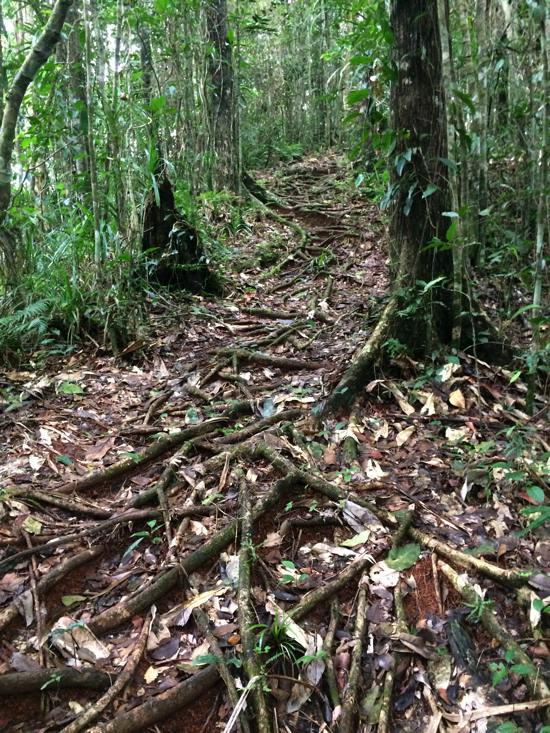  Roots forming steps up a steep climb and looking up through the lower canopy. We joined the creek up high on a hill, and followed it down, whilst taking a few detours. Most of the time it’s doing it’s own thing: slipping over smooth boulders, pushing it’s way under rocks, tumbling down cliffs and plunging into pools, but at the start and end of the walk it’s been dammed with wooden logs into big swimming pools, almost natural, often with rope swings and a couple of rustic benches. The forest was almost deserted when we were there but I could imagine that on a sunny weekend, the pools would be full of happy families cooling off.  Looking down over a waterfall to one of the purpose made ‘swimming pools’. Not quite what you get at the sports centre... We chose the natural plunge pools at the base of water falls to swim in, getting as close as we dared to the serious ‘power-shower’ then letting the current sweep us down stream a little before swimming back up. Just the thing after our clambering and climbing in the humid warmth.  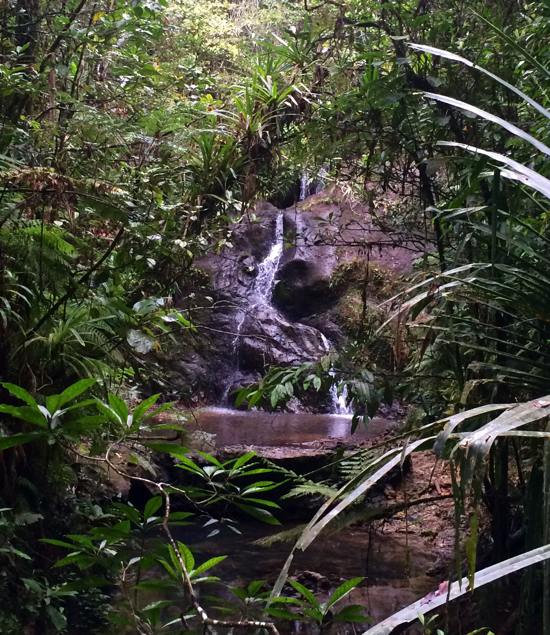 just to give you scale, the first picture shows a waterfall of about 30ft. As we walked we glimpsed parrots (yellow breasted musk parrots), squawking and flashing bright colours as pairs flew over, and heard a constant twitter and coo of other birds, mostly too deep in the foliage to be spotted. One kind fascinated us: we could hear what seemed to be a constant dog barking; a series of woofs but without the ‘f’s: “woo woo woo”. We thought maybe monkey at first, then remembered that Fiji doesn’t have any. It turned out to be a type of pigeon, the barking pigeon, it looks just like a regular pigeon but is more streamlined, and sends its call resounding through the forest. As I hope you can see from the pictures, the forest was mostly green upon green upon green, but every now and again a flash of colour would surprise me: flowers, berries and seeds glowing bright in the shady undergrowth. I don’t know what they are - I’m not much good at flower names I’m afraid, so I’ll just show some of them to you! 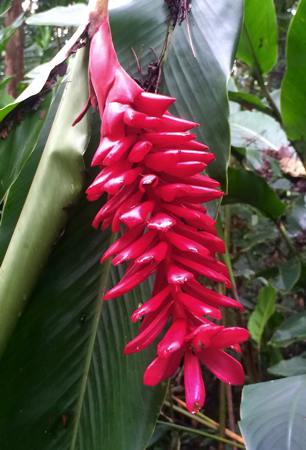 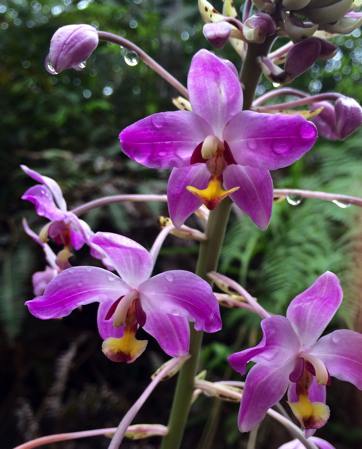   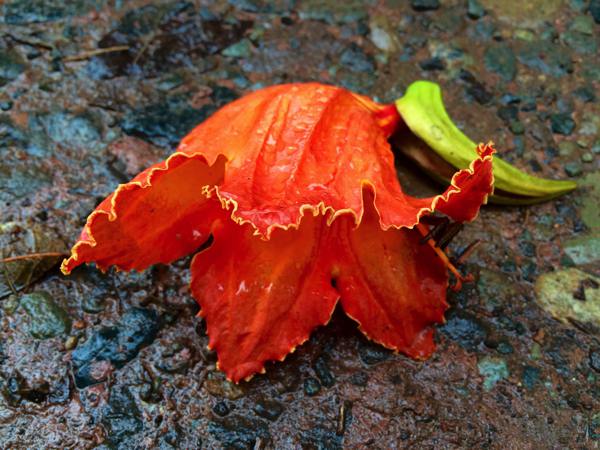 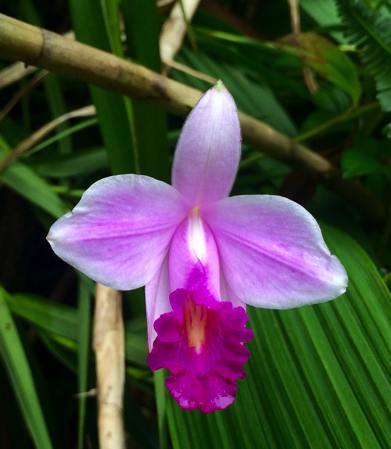 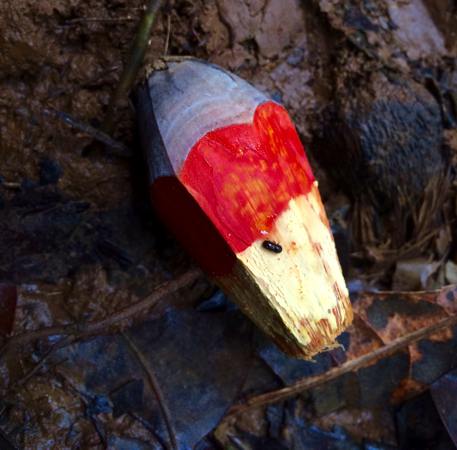 As always when in a rain forest, I am fascinated by the ways the trees choose to try to get up above the competition as quickly, and with as little bulk, as they can. Some form buttresses, as thin as planks, at right angles to the trunk, some drop supporting roots down all along the branches, sort of mini trunks to help each branch along it’s way, others simply hitch hike on an existing tree, eventually strangling its host and taking over the gap in the canopy. The type we saw lots of on this walk used a different strategy: as they grow upwards they send down supporting struts, at about 40 degrees to the trunk, to prop themselves up. This makes them look like just like those shelters kids build in the woods. The strange thing is that there is no continuous thick trunk down the middle, the tree doesn’t bother to thicken the original trunk it grew up on, it seems to spend it’s energy on these struts instead, so the main trunk gets thicker the higher it goes, instead of thinner as we’re more used to! 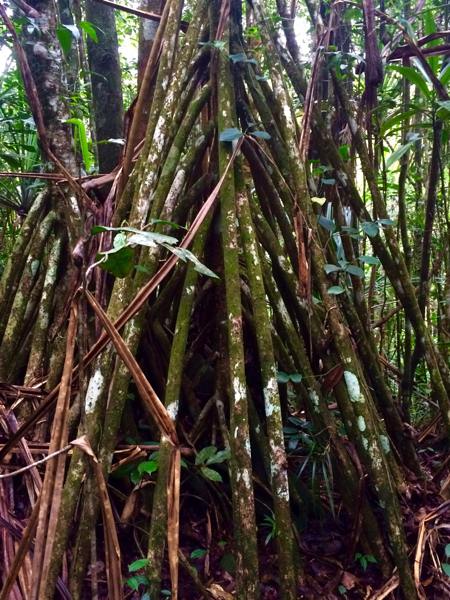  A natural den formed from the prop roots of the tree, then a snap of two fresh roots growing downwards (they have small spikes and a papery growing tip). You can see on this picture how the trunk thickens as it goes up. So perhaps it’s not such a bad thing that there’s so much rain in Suva…  and when it rains it really rains!! |